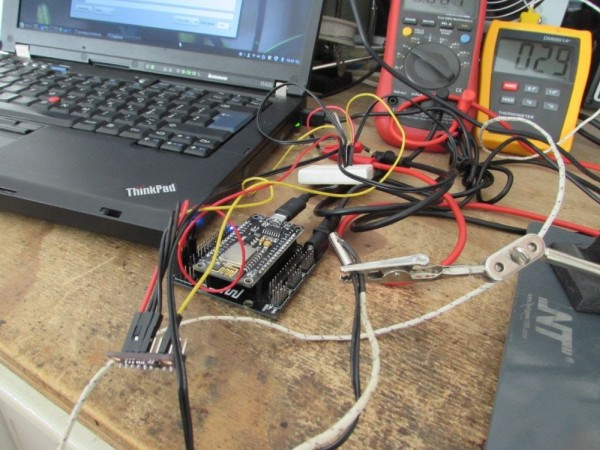Summary of esp8266/Arduino NTC (Negative Temperature Coefficient) library
This article discusses a library for measuring temperature using an NTC thermistor with ESP8266 or ADS1015 ADC. It explains using the Steinhart-Hart or Beta Model equations to convert ADC readings to temperature in Celsius or Fahrenheit. The internal ESP8266 10-bit ADC (0-1V) can be used but ADS1015 12-bit ADC offers higher accuracy. The article details calculating the appropriate pull-up resistor (around 220kΩ) for voltage measurement within limits. It also mentions implementing an IIR digital filter for improved reading stability. The code is developed with Atom and PlatformIO for the esp8266/Arduino platform.
Parts used in the Thermistor Temperature Measurement Project:
- NTC Negative Temperature Coefficient Thermistor (100kΩ at -20°C)
- ESP8266 microcontroller
- ADS1015 12-bit Analog-to-Digital Converter (optional for higher accuracy)
- 220kΩ pull-up resistor
- Adafruit ADS1X15 library (software component)
- Atom editor with PlatformIO (development environment)
A thermistor is a type of negative coefficient resistor whose resistance is dependent on temperature, more so than in standard resistors. The resistance of a NTC Negative Temperature Coefficient thermistor (https://en.wikipedia.org/wiki/Thermistor) decreases as temperature rises. The Steinhart-Hart Thermistor Equation or the Beta Model Equation can be used to correlate the thermistor resistance to temperature to which the sensor is exposed.
The library implements the Steinhart-Hart Thermistor Equation or the Beta Model Equation to convert adc value read from analog input to temperature.
It output temperatures in Celsius or Fahrenheit.
The ESP8266 comes with a 10bit ADC, 0 to 1V, one can use the ESP8266 ADC for this library.
Suppose you are going to the internal ADC, and that NTC is going to be used between -20 and +100 degree Celsius. The NTC resistance by datasheet at -20 degree is 100k, and at 100 degree 100. To evaluate the pullup resistor you have to consider that the Voltage output at the ADC pin will be
Vout = Vpullup*(Rntc/Rntc+Rpullup)
We have to consider the max Vout, that comes from the max resistance given by the NTC
Voutmax = Vpullup*Rntcmax/(Rntcmax+Rpullup)
We have to chose a Rpullup such that Voutmax < 1V, so:
Rpullup = Vpullup*Rntcmax/Voutmax – Rntcmax
Subsitute with the sample NTC we are considering:
Rpullup = 3.3*100000/1 – 100000 = 230000.
A 220k resistor would do the job.
In the example i propose here I am using a ADS1015 12 bit analog to digital comparator, that is much more accurate than the internal ESP8266 ADC.
I am using the Adafruit ADS1X15 library for this IC, on top of that library I’ve build an helper to just convert the ADC raw value that comes from the ADS1x15 to a resistance or voltage value.

Once we’ve acquired the NTC resistance we can use the Steinhart-Hart Thermistor Equation or the Beta Model Equation to convert the resistance value to temperature.
A digital iir filter is implemented to remove unwanted reading errors.
This library was developed on Atom+PlatformIO, compiled esp8266/Arduino.
Code
Read More: esp8266/Arduino NTC (Negative Temperature Coefficient) library
